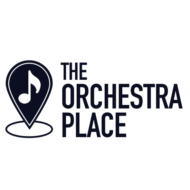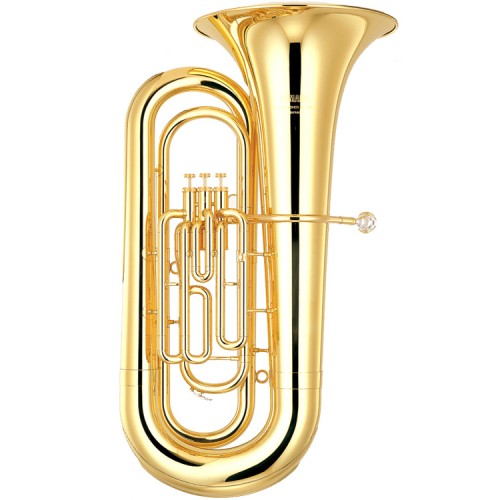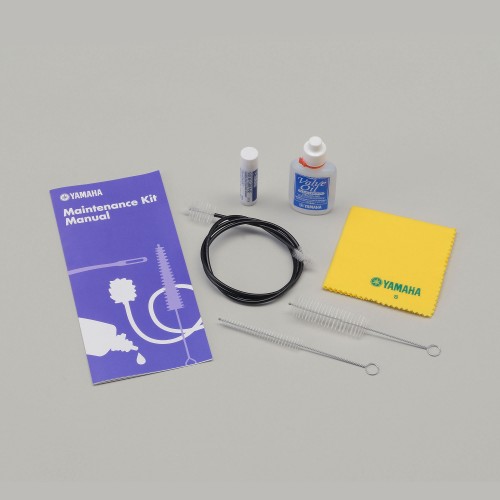Introduction
Tubas are brass instruments with the lowest tonal range, but they have slight variations. In addition to different possible structures, the four main pitches are F, E♭, C, and B♭. The baritone, euphonium, and sousaphone are also companions of the tuba.
There are three different tuba styles. Each style is favored based on the country.
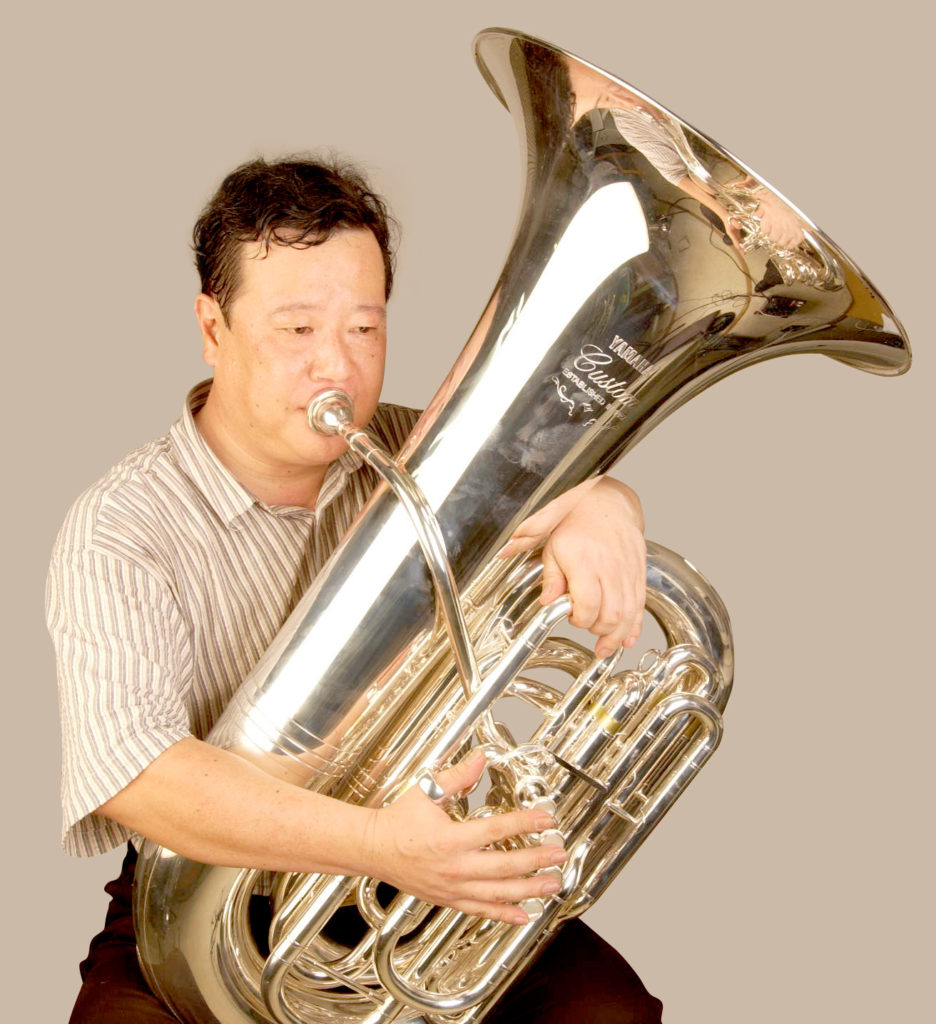
Front-action tubas are favored in the U.S. The pistons are positioned on the front and are played with the right hand, while the bell sits on the player’s left side. Another distinctive trait is the short leadpipe.
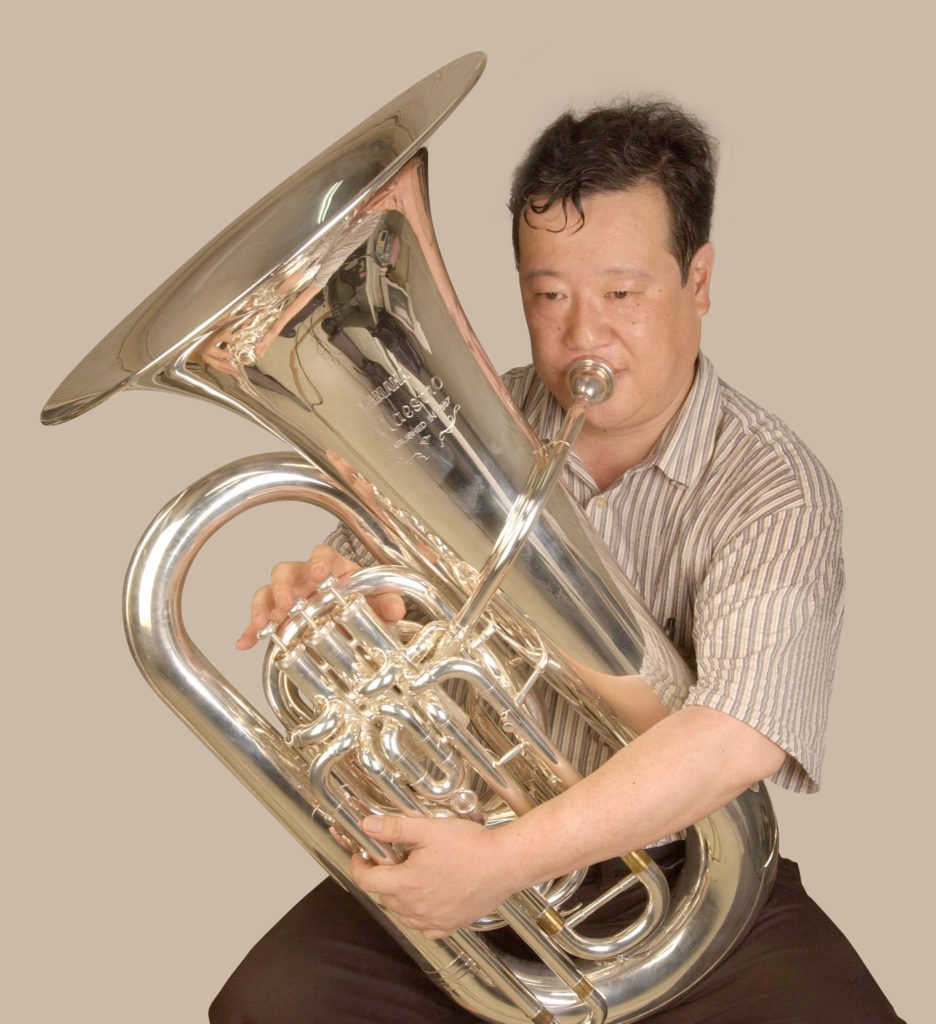
Top-action tubas are popular in the U.K. and France. The pistons move vertically and are played with the right hand, while the bell sits on the player’s right side.
Rotary-valved tubas are mostly favored in Germany, Austria, and Russia. The levers are played with the right hand and the bell sits on the player’s left side.
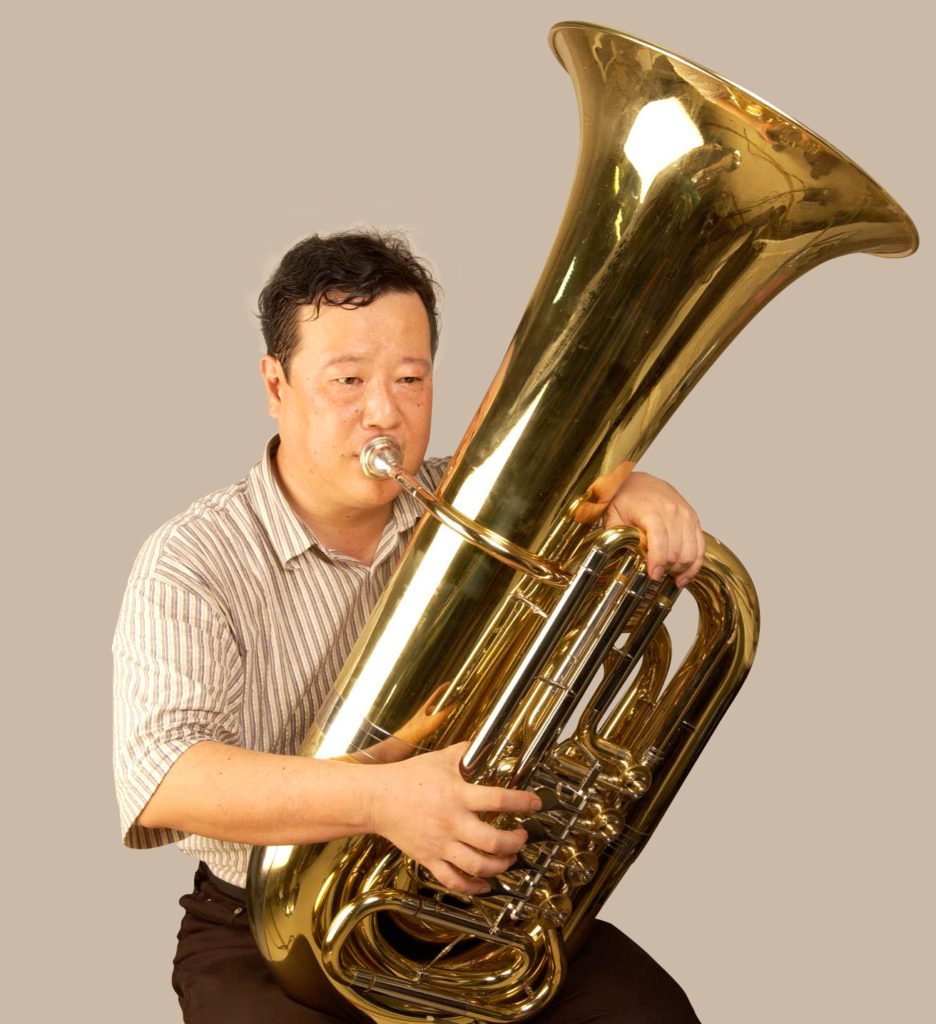
Rotary-valved tubas are mostly favored in Germany, Austria, and Russia. The levers are played with the right hand and the bell sits on the player’s left side.
The side that the bell sits on affects the placement of the player’s seat in the orchestra. Furthermore, if members do not have similarly positioned bells, it makes a less aesthetic impression as a group. The pitch of the tuba can also vary based on the style of the instrument.
Back to topWhy Play the Tuba?
Listen as Staff Sergeant Scott Deveraux describe the tuba and why he likes playing this instrument.
Which Tuba Should I Choose?
The Orchestra Place requires all students to have an instrument from the teacher-approved brand list to ensure the best experience and sound for the student and the ensemble.
For beginners, we recommend the Yamaha Standard BBb Tuba for its quality and ease of playing.
The Yamaha Model YBB-201WC Standard BBb Tuba is an excellent instrument for beginning students and when budget is a strong consideration. It offers a large “pro-sized” bell and features a rich strong sound. It is easy to play and has accurate intonation. Hand-lapping is a time-consuming finishing process which results in superior valve fit for noiseless, responsive action and easy tone changes. The excellent intonation of the YBB-201 helps to foster a feel for correct pitch in beginning players.
Back to topHow Much Should a Tuba Cost?
A student tuba will cost roughly $3500-$5000. Intermediate and professional tubas can cost $5000 to $8000 or more.
Back to topRent-to-Own or Lease-to-Own Tuba Options
Installment plans are an excellent option if you’re ready to make the commitment of buying an instrument but can benefit from deferred payments. This way, you get the freedom to pay over time, with the ultimate reward of owning the instrument. If you choose a rent-to-own or lease-to-own option, however, it’s important to check the fine print to make sure there are no hidden fees, and you should investigate the cancellation policy as well. Never sign up for a plan that traps you into payments if your child loses interest in playing an instrument. Look also for retailers who offer affordable damage protection during the installment term.
Our instrument supplier, The Instrument Place, offers teacher-approved instruments and one of the best interest-free lease-to-own programs as part of their commitment to getting an instrument in the hands of every person who wishes to play, without it being a financial burden.
Back to topRecommended Tuba Accessories
When buying a tuba, look for a store that offers all the accessories your child will need in order to best use and maintain it. Along with your purchase, check that a protective carrying case, mouthpiece, slide cleaning rod, lint-free polishing cloth, and slide oil are included or can be added. Some other items you could also pick up are a cleaning snake, mouthpiece brush, and tuning slide grease.
If given the option to purchase a music stand, go for it! A music stand promotes proper playing posture, which helps to prevent back aches and hunching over.
The Instrument Place instrument outfits come equipped with everything needed to get started in class, plus a free music stand with every instrument purchase!
Back to top